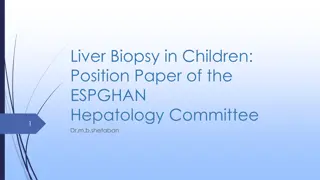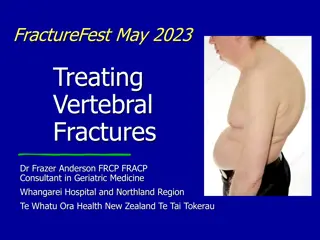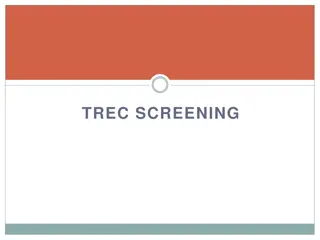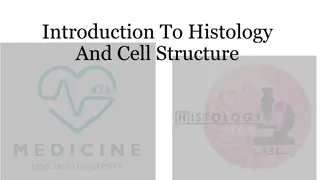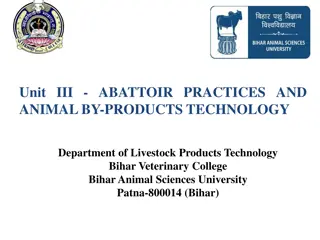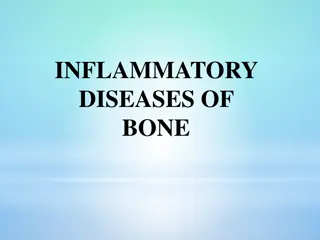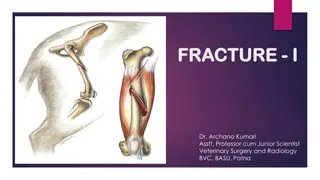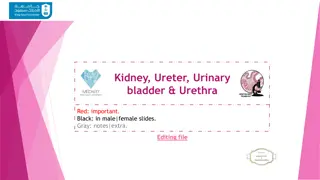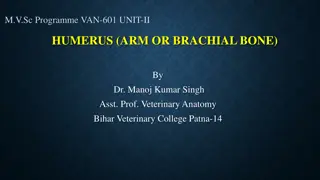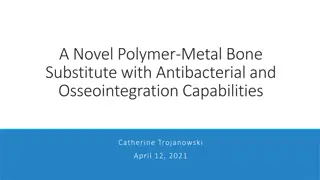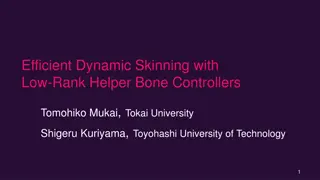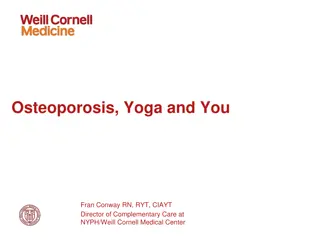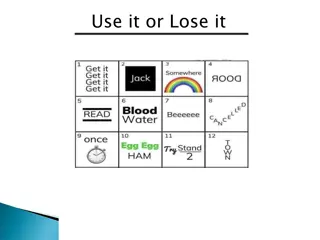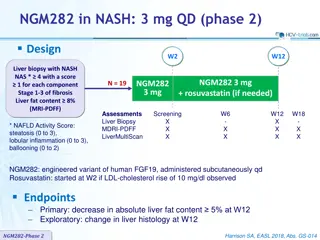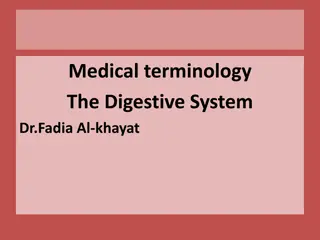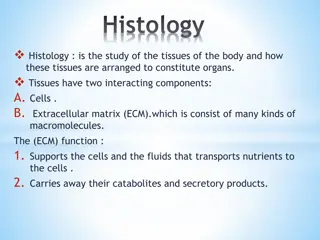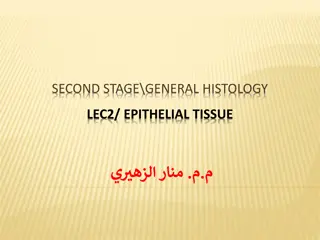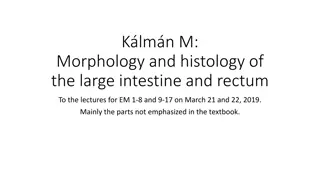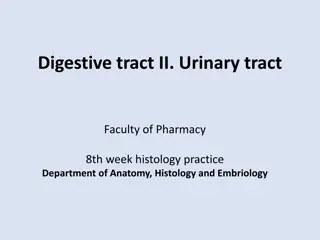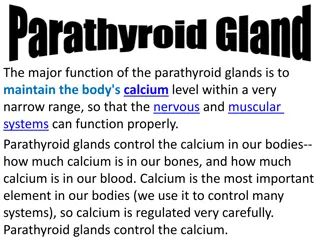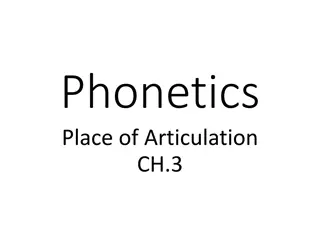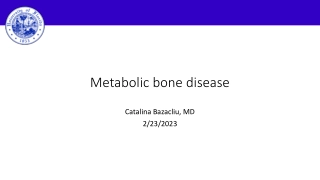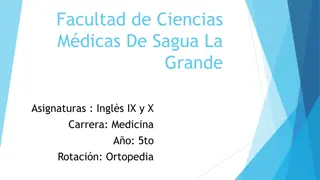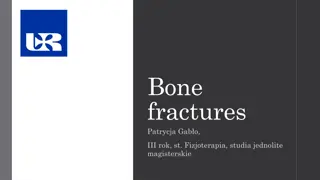Excised Biopsy Tract Histology for Primary Bone Tumours: Necessity of Excision Examined
Investigating the necessity of excising biopsy tracts in primary bone tumours, this study analyzed 278 patients over a span of two years. Findings indicated conflicting evidence regarding the risk of malignant seeding in biopsy tracts, with only one patient showing histological evidence of seeding. The study aimed to determine the frequency of excision, incidence of seeding, and impact on local recurrence rates.
Download Presentation

Please find below an Image/Link to download the presentation.
The content on the website is provided AS IS for your information and personal use only. It may not be sold, licensed, or shared on other websites without obtaining consent from the author. Download presentation by click this link. If you encounter any issues during the download, it is possible that the publisher has removed the file from their server.
E N D
Presentation Transcript
A review of excised biopsy tract histology for primary bone tumours: Is excision necessary? Price A, Maxwell C, Beardsall J, Jeys L
Background Biopsy tracts are excised at the point of definitive surgery. Theoretical risk of malignant seeding of the biopsy tract. Cases of malignant seeding of the needle biopsy tracts in other malignancies. Insufficient evidence to suggest that biopsy tracts pose a risk to local recurrence Case reports and small studies are conflicting.
Aims 1. To investigate how frequently biopsy tract excision is carried out at ROH. 2. To establish the incidence of seeding of biopsy tracts in our patients. 3. Evaluate types are more likely to seed a biopsy tract. whether certain tumour 4. Determine whether the excision of biopsy tracts reduces the rate of local recurrence.
Methods A retrospective analysis of 278 patients with primary bone tumours 1/1/08-31/12/09 Minimum 3 years follow up. Histology reports for all patients were reviewed. The database was used to find: Diagnosis Age at diagnosis Type and date of biopsy Type and date of surgical procedure Local recurrence, metastases and death. Statistical analysis was carried out using Statsview (Berkley, California).
Patient selection 278 Primary bone tumours between 2008-2009 203 75 Surgery recorded at ROH No surgery recorded at ROH 94 109 Biopsy tract not commented upon in pathology report Biopsy tract excised 108 Negative biopsy tract histology 1 Positive biopsy tract histology
203 patients at ROH Mean age at diagnosis (range 3-90yrs). 88% underwent needle biopsy as the method of biopsy. Wide range of definitive surgical procedures. was 33yrs 109 had a biopsy tract excision 94 did not have a tract excision mentioned 45 amputations - ?tract excised The remainder could not be identified at the time of surgery? Average time procedure for these patients 4mths from biopsy to
109 patients with excised biopsy tract The primary diagnosis varied considerably 108 patients had no evidence of seeding. 1 patient had histological evidence of seeding within the biopsy tract: ..along the needle track, a 3mm solid nodule of high grade sarcoma similar to the high grade component of the intraosseoustumour. This nodule most likely represents an implant.
One case of malignant infiltration 72yr old with dedifferentiated chondrosarcoma of the distal femur. Needle biopsy 20 days prior to EPR and excision of the biopsy tract. Large local recurrence within 5 months of diagnosis. The patient died 10 months later with metastatic disease.
Local recurrence rates The group who did not have a biopsy tract excision had less LR than the excised group 9 vs. 19%, p=0.04 This probably reflects a higher rate of amputation in the non biopsy group. Not excising the tract does not necessarily increase the risk of local recurrence.
Time to local recurrence Kaplan-Meier Cum. Survival Plot for TimeToLR Censor Variable: Lrcensor Grouping Variable: Tract? 1 .8 Cum. Survival Cum. Survival (No tract) .6 Event Times (No tract) Cum. Survival (tract) .4 Event Times (tract) .2 0 0 5 10 15 20 Time 25 30 35 40
Survival Kaplan-Meier Cum. Survival Plot for TimeAlive Censor Variable: Censored Grouping Variable: Tract? 1 .8 Cum. Survival Cum. Survival (No tract) .6 Event Times (No tract) Cum. Survival (tract) .4 Event Times (tract) .2 0 0 10 20 30 Time 40 50 60
Discussion Our study shows that biopsy tract excision was not commented upon in 46% cases, of those 48% underwent amputation. 49 patients (24%) had no biopsy tract excised at definitive surgery, as it may be that the tract was difficult to locate. Local recurrence rate was lower in patients who did not undergo biopsy excision, however, this is most likely to be due to the large number of amputations carried out in this group. Survival and time to LR recurrence remained the same in both groups. We have since become aware of three previous incidences of biopsy tract seeding in patients at the ROH between 1996-1999. These were all in chrondrosarcomas.
Conclusion Removal of biopsy tract remains the gold standard. Association between local recurrence and biopsy tracts is difficult to confirm. The biopsy tract may be at higher risk in tumours such as chondrosarcomas which do not receive chemotherapy. Take home message Overall the rate of seeding in our cohort is low. This reassures us that the patient is unlikely to be compromised if identification or removal of the biopsy tract proves difficult.
References 1. A. Jalgaonkar, S. J. Dawson-Bowling, A. T. Mohan, B. Spiegelberg, A. Sai Identification of the biopsy track in musculoskeletal tumour surgery: A novel technique using India ink Bone Joint J February 2013 95-B:250-253. A Jalgaonkar, A Mohan, R Pollock, J Skinner, S Cannon, T Briggs et al Preoperative biopsy tract identification using India ink skin tattoo in tumour surgery Bone Joint J February 2013 95-B:250-253. R. Pollock and P Stalley Biopsy of musculo-skeletal tumours, beware the danger J Bone Joint Surg Br 2004 vol. 86-B no. SUPP IV 484 S Saghieh, K Masrouha, K Musallam, R Mahfouz, M Abboud, N Khoury et al The risk of local recurrence along the core-needle biopsy tract in patients with bone sarcomas Iowa Orthop J. 2010; 30: 80 83. Schwartz HS, Spengler DM. Ann Surg Oncol. Needle tract recurrences after closed biopsy for sarcoma: three cases and review of the literature. 1997 Apr-May;4(3):228-36. Kaffenberger BH, Wakely PE Jr, Mayerson JL. Local recurrence rate of fine-needle aspiration biopsy in primary high- grade sarcomas. J Surg Oncol. 2010 Jun 1;101(7):618-21. doi: 10.1002/jso.21552. Ribeiro MB, Oliveira CRG, Filippi RZ, Baptista AM, Caiero MT, Saito CF et al. Histopathological study on biopsy track in malignant musculoskeletal tumors. ActaOrtop Bras. [online]. 2009; 17(5):279-81. Available from URL: http://www.scielo.br/aob. Lemsawatdikul K, Gooding CA, Twomey EL, Kim GE, Goldsby RE, Cohen I, O'Donnell RJ. Seeding of osteosarcoma in the biopsy tract of a patient with multifocal osteosarcoma. Pediatr Radio. 2005 Jul;35(7):717-21. Epub 2005 Mar 9 Davies NM, Livesley PJ, Cannon SR .Recurrence of an osteosarcoma in a needle biopsy track. J Bone Joint Surg Br. 1993 Nov;75(6):977-8. 10. Bickels J, Jelinek J, Shmookler B, Neff R, Malawer M Biopsy of Musculoskeltal Tumors Current concepts Clinical orthopaedics and related research Numer 368 pp212-219 11. C F Loughran, C R Keeling Seeding of tumour cells following breast biopsy: a literature review Br J Radiol. 2011 October; 84(1006): 869 874. 2. 3. 4. 5. 6. 7. 8. 9.



